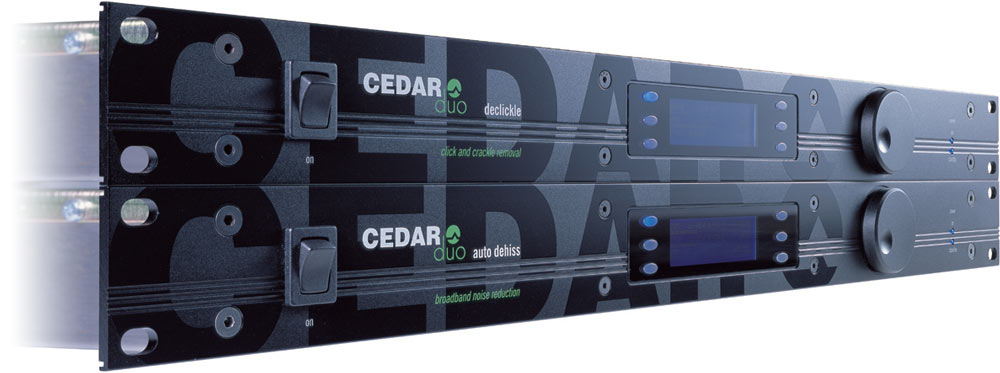CEDAR Duos

2004 - 2016
There are no modern equivalents to the Duos.
Software solutions: CEDAR Studio and CEDAR Cambridge.
There were two models in the Duo range, the DDC declickle™ and the DDH auto dehiss. Each incorporated dual SHARC™ processors and hosted new algorithms derived from CEDAR Cambridge™, but further optimised to remove more noise with greater transparency than ever before. They also incorporated major functional improvements over all previous audio restoration rackmount modules including 96kHz, 24-bit I/O, 99 programmable memories, remote control via MIDI, and local upgrade capability via USB,
The DDC declickle™ was born out of our dedication to solve the dual problems of declicking and decrackling difficult signals such as brass, solo strings and human singing without introducing unwanted artefacts. In overcoming these difficulties, we discovered that a new algorithm could yield better results than applying separate declick and decrackle processes. This resulted in superior performance across a wider range of material than ever before. Indeed, its performance was so good that, in almost all cases, it was not possible to hear that the signal had been damaged prior to restoration.
Despite being told for many years that it was impossible, CEDAR Audio developed auto-dehissing for those occasions when it is inappropriate to employ a fully-featured, computer-based noise reduction system. The DDH auto dehiss™ incorporated the third generation of this process and was optimised for consistent noises such as tape hiss and general background noise. Nevertheless, the power of the auto dehiss process was controlled by a remarkably simple and intuitive interface, so that excellent results could be obtained quickly by users with no audio engineering background.